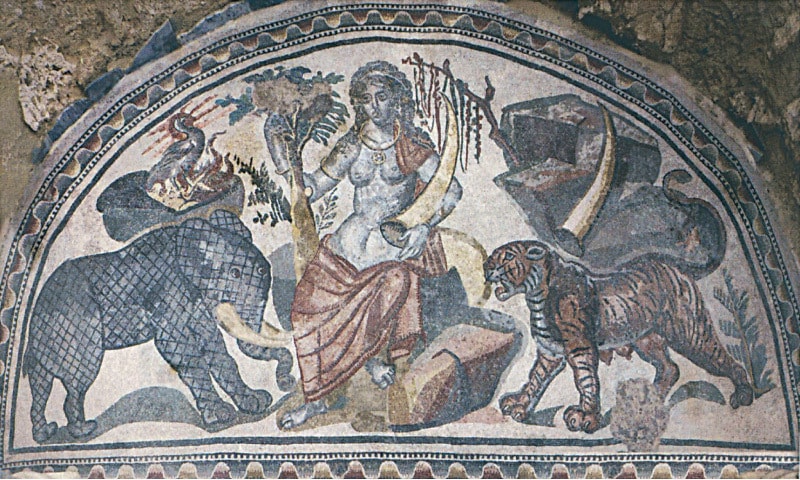when a series of remarkable finds were discovered.
Today, Berenike is a desolate and gloomy location. Here, under light blue skies, the level, treeless, red-dust aqueducts of the eastern desert give way to the blustery shores of the Red Ocean. Although the site contains the foundations of some once impressive structures, including a couple of temples, a Roman aromatics distillery, and a fine bath house, the broken walls today rarely rise much above the level of the encroaching sand dunes. As a result, there is little to see. Despite this, these unassuming ruins, which are easy to miss as you drive up the Red Sea coast, were once a place where unimaginable fortunes could be made and were the landing point for generations of Indian merchants traveling to the Roman Empire.
The magnificent Buddha’s head and torso, the first ever discovered to the west of Afghanistan, were among the finds that emerged from the Isis temple’s storeroom. It was etched from the best Proconnesian marble, from the island of Marmara off the Turkish coast, in a section Indo-Gandharan, part Palmyran, part Romano-Egyptian style, with beams of the sun radiating out from it on all sides, as though the Buddha had changed into a Roman sun based divinity like Sol or Mithras.
The style of the carving and the “tortellini-like” curls that were drilled into the head of the Buddha led the archaeologists to believe that the sculpture must have been made in a workshop in Alexandria in the second century CE. In appreciation for his safe arrival in the Roman Empire, it was probably ordered by a wealthy Indian Buddhist sea captain. Its location in an Isis temple may not have been accidental: one Egyptian papyrus of the period alludes to Isis as the mother of the Buddha.
A stone memorial to a trio of early proto-Hindu gods was also found in the storerooms of the Isis temple. One of them, Vasudeva, with his club and discus, would soon transform into the more well-known Krishna; Balarama, armed with a plough, was also praised; furthermore, the goddess Ekanamsha.
Scholars’ perceptions of the intensity, magnitude, and significance of maritime trade between the Subcontinent and the rest of the world are being fundamentally rethought as a result of recent archaeological findings. One estimate states that taxes on trade with ancient India contributed one third of the Roman empire’s total revenue. The Golden Road is the most recent book by historian William Dalrymple: Bloomsbury’s How Ancient India Transformed the World is a fascinating account of this exchange between civilizations, cultures, and global wealth. Eos presents, with authorization, a selection from the book…
There was likewise a bilingual engraving in Greek and Sanskrit, set up in the third hundred years by a Buddhist fan from Gujarat: ” This image was given by the kshatriya, or warrior, Vasula, in the sixth year of King Philip, also known as Philip the Arab, in 249 CE, for the benefit of all beings.
Spain’s pottery, Southern Arabia’s resin and frankincense, beads from Vietnam and Java, Palmyra’s god statues, and Lebanon’s cedar have all emerged from Berenike’s sands. There have additionally been letters, receipts and customs passes from Alexandria. Yet, most there has been what the backhoe portrayed as “only tons” of Indian finds, including diamonds and pearls, woven mats and bushels, teak from Kerala and, surprisingly, the bones and skulls of elephants and monkeys — explicitly, rhesus and hat macaques from India.
Indeed, for some time, this stretch of Egyptian desert sand had been producing a steady flow of finds from the Indian trading community. The archaeologists believe that the cotton weave fragments found in Berenike are of a variety grown in Gujarat and the Indus delta. A Tamil visitor who referred to himself as “the chieftain Korran” wrote a graffiti on Tamil-Brahmi pottery, and Prakrit inscriptions documented the visits of other south Indians.
The deposits of rice, dal, coconuts, coriander, tamarind, and coriander show that these south Indian merchants preferred their own peppery, delicious cuisine to Egypt’s, as do their descendants to this day. Large 22-pound pots containing several thousand imported Indian black peppercorns were discovered nearby.
Europeans have fantasized about the wealth of India ever since the first reports of the incredible splendors and riches of India began to reach Europe following Alexander the Great’s conquests in the fourth century BCE. Herodotus and the Greek geographers claimed that enormous ants dug up the gold and griffins guarded it; It was said that precious jewels were scattered like dust on the ground here.
It was India, not China, that was the best exchanging accomplice of the Roman Domain. It is likewise evident that ocean travel was the quickest, most efficient and most secure method for moving individuals and products in the pre-current world, costing about a fifth of the cost of comparable land transport.
The Romans became increasingly eager consumers of Indian goods and luxuries, particularly the spices of southern India, as the two worlds gradually came into regular and direct contact through the ports of the Red Sea in the first century BCE. For a hefty profit, Indian merchants were happy to satisfy these cravings.
The surprising degree of contact between early India and Roman Egypt is being demonstrated by rapidly expanding archaeological evidence. The Indian finds in Berenike have been reflected by similarly striking proof of Roman exchange rising up out of unearthings India, especially the new dig close to the Keralan town of Pattinam, the plausible site of Berenike’s Indian partner, Muziris.



